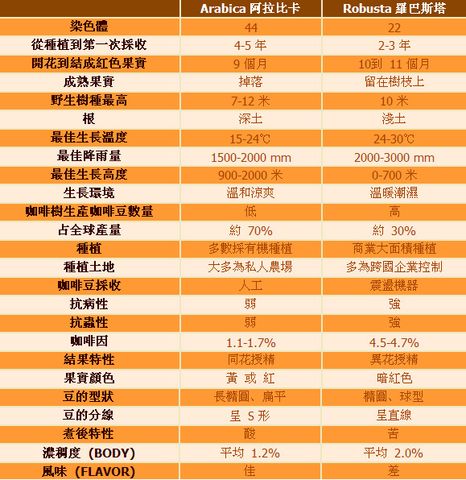Where do coffee beans usually come from?
[guide] the coffee we drink comes from the roasting and grinding of coffee beans, and all this is provided by magical coffee bars. The origin of this economic crop is in Yisuobi in Africa. It has been cultivated for more than 2000 years. At present, the main coffee producing areas in the world are Latin America, Africa and Africa. According to statistics, coffee is cultivated in 76 countries in the world.
The coffee we drink comes from the roasting and grinding of coffee beans, and all this is provided by magical coffee bars. The origin of this economic crop is in Yisuobi in Africa. It has been cultivated for more than 2000 years. At present, the main coffee producing areas in the world are Latin America, Africa and Africa. According to statistics, coffee is cultivated in 76 countries in the world, mainly in Africa and the United States. Chinese coffee was first introduced in Taiwan in 1884. In 1908, large-grain and medium-grain varieties of coffee were first introduced to Taiwan in 1908. At present, the main cultivation areas are in Hainan, Shaanxi, Guangxi and Hainan.
The first flowering period of the coffee bar is about three years. The white five-petal tube flowers are scattered with a faint scent of jasmine. The inflorescences are arranged in dense clusters and contain essential oils, which can be used as high-grade spices. Flowers wither after two or three days of blooming and begin to bear fruit in a few months. The fruit is a stone fruit, about 1.5 cm long, it is dark at first, then it is dark when it is ripe, and it is very similar to peach, so it is called peach coffee (Coffee Cherry) and can be harvested at this time.
The coffee fruit contains coffee beans, that is, coffee beans. There are raw beans and cooked beans. What we usually see are coffee beans, that is, beans that are roasted and fried in high fat.
Each raw coffee bean has the outer membrane of a cattail, which is called peel, and its outer coat is covered with a dark-colored outer skin, which is called endocarp. The whole coffee bean is wrapped in a sticky substance to form the pulp of the coffee, which is thick and sweet, and the outermost is exotic.
Climate is the decisive factor in coffee planting, and coffee coffee plants only grow together in the summer or winter, so it is most suitable to grow coffee in areas between the north and south of 25 degrees. This coffee producing place is generally referred to as "coffee shop" or "coffee area".
However, not all the land located in this area can produce good coffee shops. The ideal planting conditions for coffee bars are warm temperatures between 15 and 25 ℃, and the annual rainfall must reach 1500 to 2000 millimeters. At the same time, the rainfall should be in line with the blooming season of the coffee shop. Of course, in addition to the combination of seasonal seasons and rainfall, there should also be fertile soil. The most suitable soil for growing coffee is a well-drained, fertile soil containing pozzolanic ash.
In addition, daylight is of course an indispensable element for the growth and fruit of coffee, but strong sunlight will affect the growth of coffee coffee, so various producing areas usually cooperate with the planting of some shade plants, such as bananas, mangoes and legumes. The ideal altitude is 500-2000 meters. Therefore, the best coffee products are grown at an altitude of 8-1200 meters above sea level. It can be seen that the conditions of growing high-quality coffee, such as light, rainfall, soil, grain, as well as the way coffee beans are harvested and the production process, will affect the quality of the coffee itself.

Source: network
Important Notice :
前街咖啡 FrontStreet Coffee has moved to new addredd:
FrontStreet Coffee Address: 315,Donghua East Road,GuangZhou
Tel:020 38364473
- Prev

The difference between Arabica and Rubusta
Arabica coffee (transferred from www.molinarichina.com) Arabica coffee (Coffee.Arabica): Arabica coffee, also known as Arabica coffee, its taxonomic position was determined by Linnaeus in 1753. It can produce Arabica coffee (C.Arabica) beans, which can be called high-quality coffee beans in the world and the only coffee that can be drunk without any ingredients. Allah
- Next

How to better preserve coffee beans and how to taste coffee better
Dark coffee seems lonely, but it is not: milk, cream balls, ice cream, rock sugar, sweet wine, chocolate rice and colorful rice are all good friends of coffee. [how to preserve coffee beans] roasted coffee beans are easily oxidized by contact with air, resulting in deterioration of the oil, volatilization and disappearance of the fragrance, and then added by temperature, humidity, sunlight and other factors.
Related
- Guji coffee producing area of Guji, Ethiopia: Humbela, Shakiso, Wulaga
- What is the most expensive variety of Qiloso in BOP multi-variety group?
- How to store the coffee beans bought home?
- Why are Yemeni coffee beans so rare now?
- Ethiopian Sidamo all Red Fruit Sun Sun Santa Vini Coffee beans
- SOE is mostly sour? What does it mean? Is it a single bean? what's the difference between it and Italian blending?
- Is Italian coffee beans suitable for making hand-brewed coffee?
- How to choose coffee beans when making cold coffee? What kind of coffee beans are suitable for making cold coffee?
- Just entered the pit to make coffee, what kind of coffee beans should be chosen?
- Can only Japan buy real Blue Mountain Coffee? What are authentic Jamaican Blue Mountain coffee beans?

